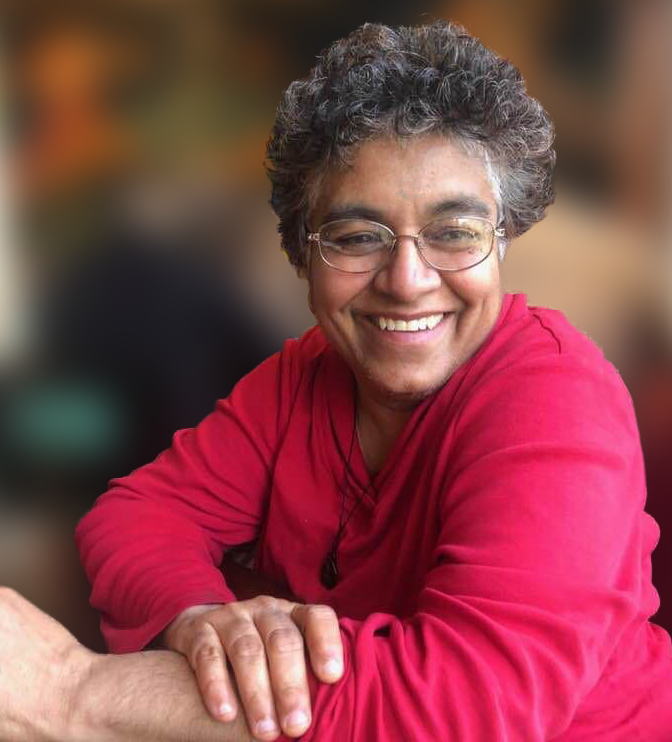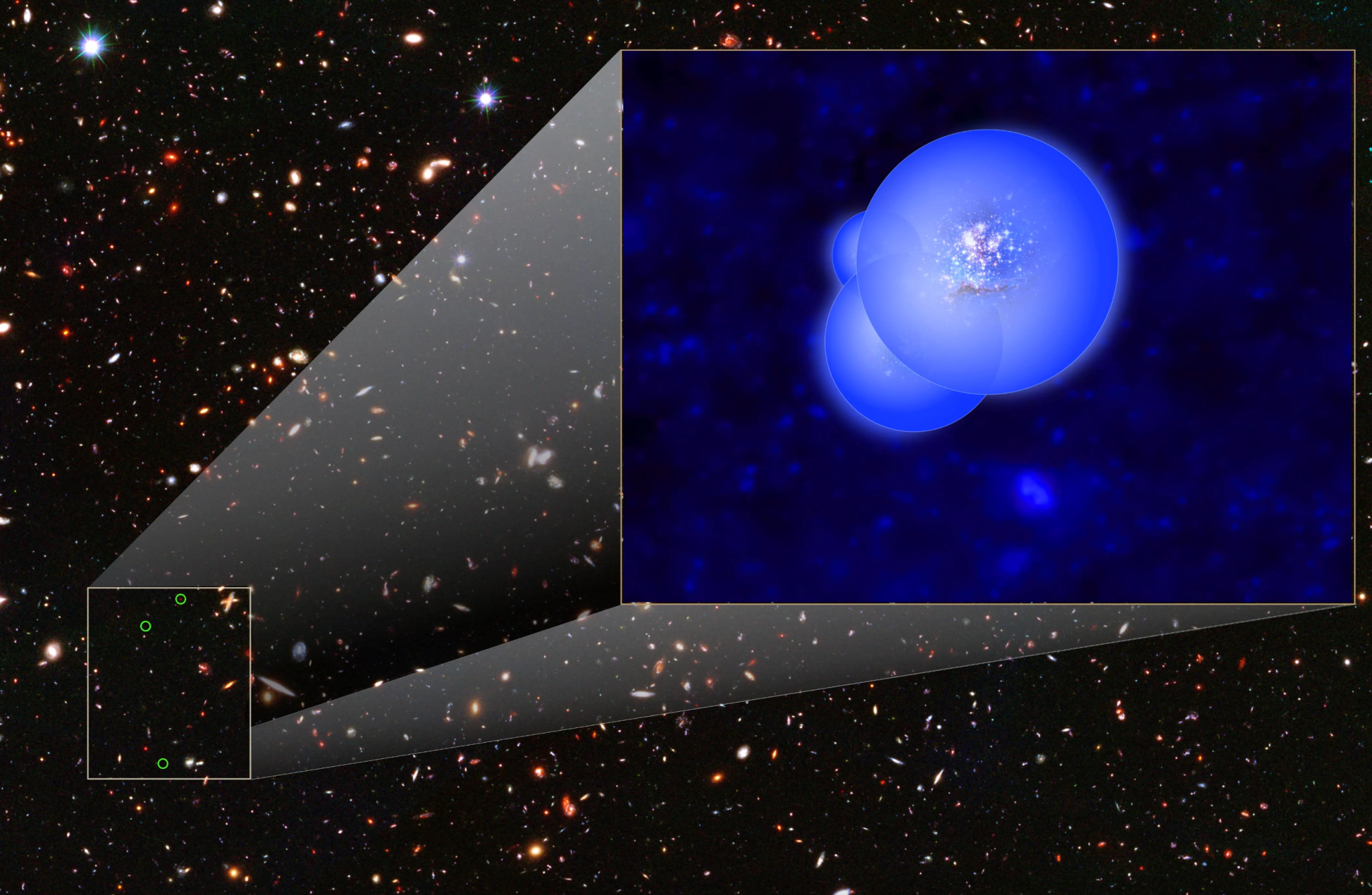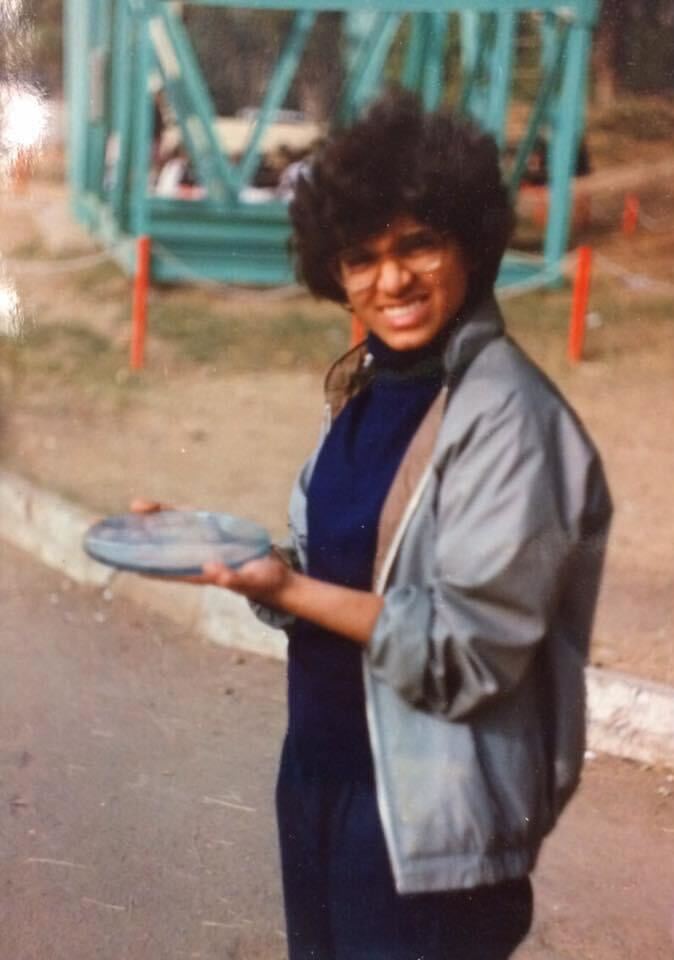
Sangeeta Malhotra
Research Astrophysicist - Goddard Space Flight Center
On cool nights in New Delhi, India, a young Sangeeta Malhotra –– now a research astrophysicist at NASA –– would lay on her roof and stare at the stars until she fell asleep.
“I was one of the few people who looked forward to the frequent planned power outages our city had to conserve energy, because they provided perfect dark skies for stargazing,” Sangeeta says. “To this day, my favorite part of the work I do is going out to observatories to immerse myself in the cosmos.”
Kindled at a young age, Sangeeta’s love of astronomy only grew.
“I fell in love with physics the first time I encountered it, in sixth grade,” she says. “It was a language that spoke to me.” Within a year, Sangeeta was reading high school physics books, which she sometimes got her hands on by sneaking them out of her older siblings’ backpacks.
Throughout middle school and high school, she also watched Carl Sagan’s series “Cosmos” every week. Decades later, she would rewatch it as an astronomy professor and select clips to show her students.
A Universal Education
Growing up, Sangeeta didn’t have the money to buy a telescope, so the first one she owned was one she made herself. She joined an amateur astronomy group in high school where they learned to grind mirrors, put them together, and test them.
Torn between physics and astronomy, Sangeeta decided to pursue a bachelor’s degree in Physics from Delhi University since it would lay important groundwork in either case. She dove deeper into physics through a master’s program at the Indian Institute of Technology, Kanpur, and then astronomy finally won when Sangeeta completed a Ph.D. in the subject at Princeton.
“Socially, it was a big transition to move to the U.S.,” she says. “But there was a tight-knit group of astronomy students in the program, and that felt like home.”
Sangeeta worked on several different projects at Princeton. Her thesis involved studying our galaxy’s shape and dark matter content by tracing the motion of gas. She also studied the behavior of interstellar dust and investigated the Hubble constant, which describes how fast the universe is expanding.
“I also did some cosmology, working to determine whether dark energy might really exist,” Sangeeta says. “At the time it was popular to dismiss the idea, but I found that you couldn’t rule it out. That was about the best we could do at the time, but it was a sort of precursor to the dark energy studies we continue to do today.”
Cosmic Detective Work
Following graduation, Sangeeta began an NRC (National Research Council) postdoctoral fellowship through Caltech/IPAC at NASA’s Jet Propulsion Laboratory. Once that was complete, she became a Hubble Space Telescope Fellow at the Johns Hopkins University and at the National Optical Astronomy Observatory.
“I began working on what people thought was a crazy idea –– searching for the youngest galaxies in the universe,” Sangeeta says. Around 30 years prior, scientists predicted there should be a particular observational signature from the strongest emission line of hydrogen, but no one had ever found it. But using new and improved instrumentation, Sangeeta decided that looking for it again with better tools would prove useful whether or not they actually detected the signal. Around the year 2000 they did find it, but that outcome was by no means guaranteed.
“My mentor gave me some very valuable advice, which was to make sure my experiment was sensitive enough that not finding something would still be an interesting result,” she says. “That way the experiment would be a success no matter the outcome.”
Sangeeta likens such “null” results to the Sherlock Holmes story “Silver Blaze,” in which the fact that a dog didn’t bark was a vital clue: it meant an intruder wasn’t a stranger. Likewise, not seeing certain things in space can offer hints. For example, not finding a certain dark matter candidate particle despite sensitive measurements could offer constraints on what dark matter could be made of or how to better search for it in the future.
“A lot of the time in astronomy you’re working from scant clues,” Sangeeta says. “You’re like a detective looking for fingerprints in light from faraway objects, looking for things that happened or didn’t happen and seeing what that tells you about the universe.”

From Hubble to New Celestial Horizons
Following her fellowship, Sangeeta went to the Space Telescope Science Institute in Baltimore to work on the Hubble instrument NICMOS (Near Infrared Camera and Multi-Object Spectrometer). She did calibration, user support, and made a calculator that let observers know what they could expect to see given a certain amount of exposure time.
Sangeeta also advised on Hubble Ultra Deep Field planning. She suggested incorporating spectroscopy measurements, which reveal the color information in light. That’s important because it can differentiate between objects that appear red because they’re so far away that the universe’s expansion has stretched their light to red wavelengths, and objects like nearby cold stars that shine brightest in red light and things that only appear red because of intervening dust.
She ended up leading the observations herself as a guest observer.
“I spent two of the most intense years of my life making sure it would work,” she says. “It was a challenge because no one had ever done spectroscopy before to that depth. In the end, we got the depth that no one thought possible.”
Once the mode was available, it opened the gates for others to use it for different science goals as well. She began thinking about how much more scientists could do with a telescope that had a wider field of view –– something NASA’s upcoming Roman Space Telescope will provide, but that mission was just in the earliest concept stage then.
“I’m just thrilled when I think of what we learned from NICMOS and how much we’ll build on it with the James Webb and Nancy Grace Roman space telescopes,” Sangeeta says. “It’s like learning to drive on a starter car and then later being able to drive a luxury car, especially if you were involved in improving the design.”
Sangeeta became an astronomy professor at Arizona State University, where she taught, mentored students, and worked on mission concepts for just over a decade.
In 2017, Sangeeta moved to NASA’s Goddard Space Flight Center in Greenbelt, Maryland to work on Roman, then called WFIRST (the Wide Field Infrared Survey Telescope). She contributed to the calibration working group, then did a stint at NASA Headquarters in Washington, D.C. as the mission’s deputy program scientist, and returned to NASA Goddard, where she works as a research astrophysicist.
Sangeeta now focuses on preparatory science for Roman in addition to creating new time exposure calculators, this time for the Habitable Worlds Observatory –– NASA’s next flagship astrophysics mission after Roman. This mission would be the first space telescope designed to find life as we know it –– if it exists –– outside our solar system, while exploring broader secrets of the universe.
Looking ahead, Sangeeta says, “I’m most looking forward to the great science from the great new data from these missions and the new generations of scientists they will attract.”
Sangeeta also encourages students of all ages to not get disheartened. “Even though I started astronomy early in my life, it does not have to be that way,” she says. “I have seen several students who get the bug late in life make excellent scientists and engineers.”
To those who aspire to become astronomers, Sangeeta encourages, “Don’t get caught up in the competition. Focus instead on building community, and figure out what feeds your soul.” For her, that means continuing to take opportunities to visit observatories, or at least step outside at night and gaze up at the universe and wonder.
By Ashley Balzer
NASA’s Goddard Space Flight Center, Greenbelt, Md.




























